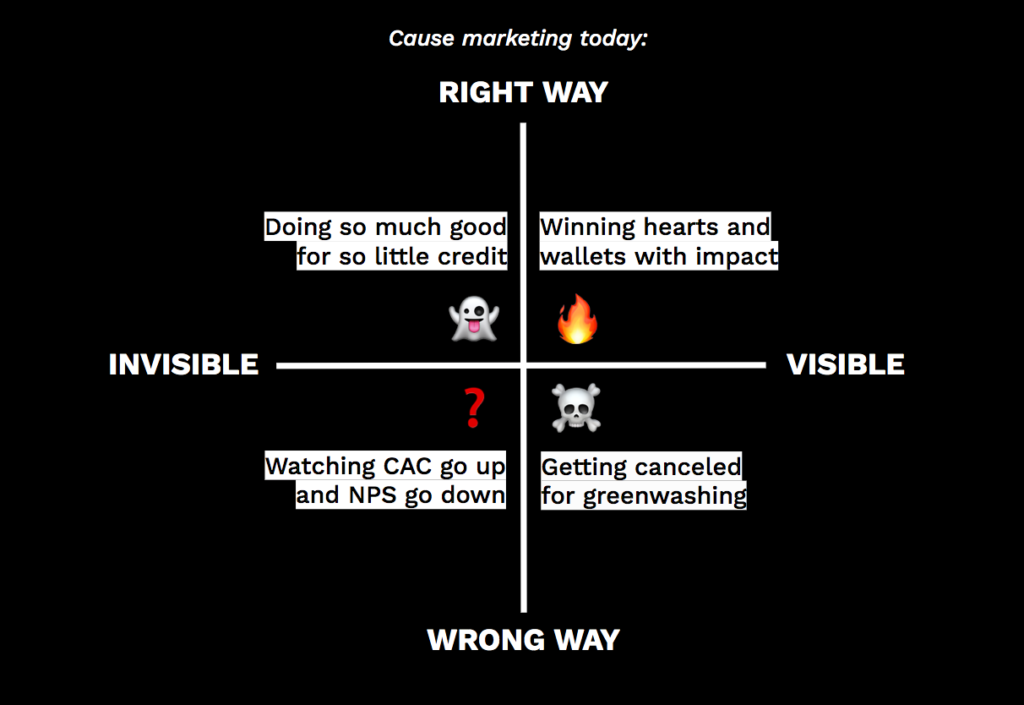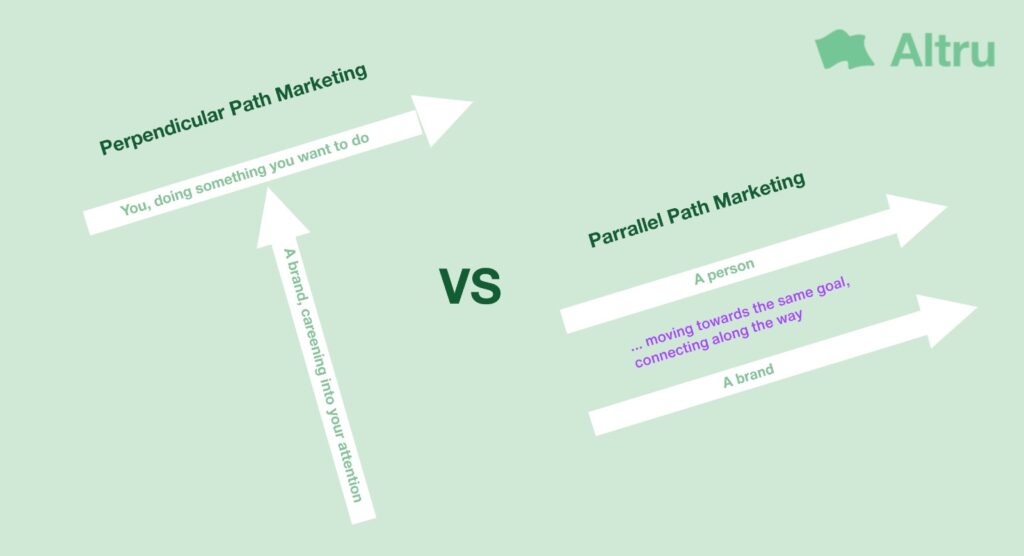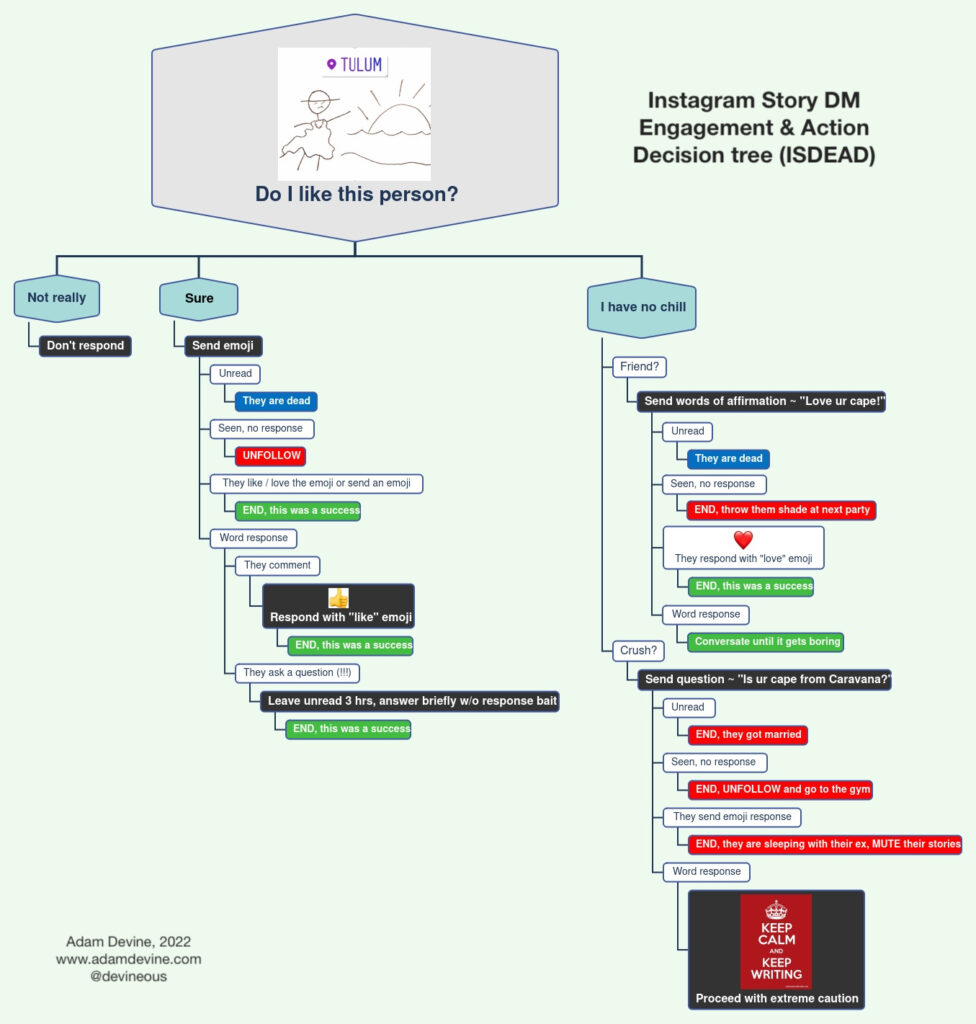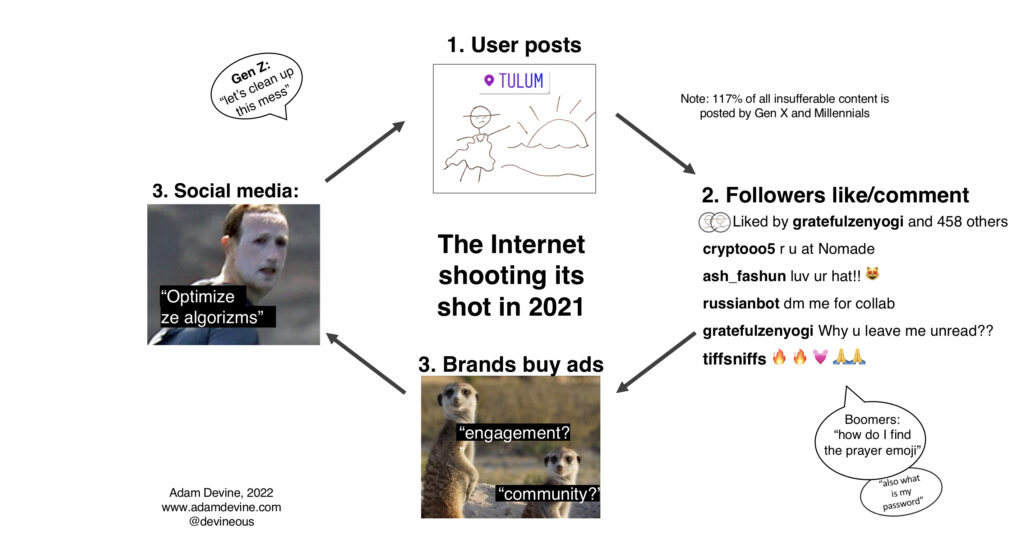There is a world where every company chooses a social or environmental cause that’s true to its brand DNA and methodically works with customers, employees and nonprofit partners to solve it, perfectly balancing profit and purpose, which generates deep brand love and improves the world. It’s totally possible. Patagonia is doing it, and a handful of other companies are authentically making an impact and winning and keeping customers as a result.
What’s the barrier to every business realizing this triple bottom line dream?
We – the Altru team – interviewed corporate social responsibility (CSR) and social impact leaders at some of the biggest and brightest companies and nonprofits to learn about their challenges and what they think would overcome them. Read on to find out what we learned.

Turns out corporate-nonprofit partnerships follow a path that looks a lot like dating.
An eternity goes into the hunt with lots of unrequited interest and many ill-fated first dates. Relationships are often short-lived, because communicating and meeting respective needs and finding stuff you both want to do together is hard. One side often feels used by the other, and each side has their own set of standards and success metrics that aren’t clearly communicated upfront. So…most relationships don’t work out.
Unlike dating, there are very specific, solvable problems that prevent companies from more effectively and profitably standing for causes. If these problems were solved, every brand could easily be authentically known for its impact mission, customers could be engaged and won by CSR initiatives, and social and environmental problems would be solved faster, because more money would be redirected from advertising into the generative flywheel of doing well by doing good. How great would that be?
There are 3 basic phases in the company-nonprofit dating game: discovery, collaboration, and amplification.
Each phase has its own set of problems, and – spoiler alert – each can be solved by software that someone (😉) should probably build.
1. Discovery: it’s hard for companies and nonprofits to find one another
Ever notice how lots of companies tend to talk about the same big-name nonprofits? You know the ones, because their logos are synonymous with the cause – even though there are dozens, hundreds, even thousands of great nonprofits that are doing effective work that deserve more support. Turns out it’s super hard for companies to find them.
Even the most experienced CSR and impact leaders at the most resourced companies spend HOURS doing “desk research” (aka Googling keywords) to try to find nonprofits who are working on both evergreen causes and emergency response, and this desk research often yields…nothing.
Discovery is an even more acute problem in emergencies.
For example, when the Ukraine war began, several CSR teams I spoke with wanted to mobilize resources immediately but couldn’t find the smaller grassroots organizations who were agile enough to “show up at the border on Day 1.” One corporate impact team actually flew to the border early in the conflict and found the tents of the biggest refugee relief organizations empty but discovered a number of smaller nonprofits they’d never heard of already at work. “We need a systematic way of finding nonprofit partners,” said one corporate foundation leader.
There’s an equal problem on the other side of the discovery process. Nonprofit leaders spend hours creating and sending pitches to companies, and according to every CSR person I spoke with, “80% of them are out of scope.” According to many nonprofit leaders we spoke with, public-facing corporate impact pages and annual reports often aren’t specific enough for them to figure out whether or not there’s a fit, so development teams often default to spray and pray.
2. Collaboration: companies and nonprofits speak different languages
“What’s the give and what’s the get?” Collaboration is usually the phase that takes the most time and starts the most headaches. Nonprofits aren’t the best at packaging their programs and campaigns into turn-key programmatic private sector collaborations, partly because they very rightly spend most of their time doing the work on the frontlines and many nonprofits still operate episodically – ie, two big fundraisers a year with very little other campaigning. This makes it hard for corporate sponsors, who want a drumbeat of activity to talk about with their employees and customers. Nonprofits need a way to package the range of ways they can collaborate with mission-aligned brands.
Nonprofits also generally don’t have the creative and media resources internally to build campaign assets. Several nonprofits I spoke with have hours of amazing footage of all kinds of events and interviews but no team or budget to turn them into content that would educate, inspire and activate the people who care about their issues. Nonprofits need the marketing talents and budgets of the private sector to craft and tell their stories.
Telling stories is critical to getting the public engaged in a specific issue, but companies often want to focus their donation on these issues within a broader theme – like Ukrainian refugees within the broader global refugee crisis – in order to tell the story. Thing is, the issues that own the news cycle are often over-resourced, and even larger, well-known and finely-tuned nonprofits (like World Food Programme and UN Women) can’t actually digest and deploy a glut of funding into the very narrow issues with which every corporate sponsor wants to be associated. Nonprofits would rather allocate resources where the need is most acute within a theme, not where there is PR value to a donor.
This dynamic is one of the leading causes of greenwashing. Companies tend to follow the news cycle, chasing issues that get media attention. Rather than building long term associations with social and environmental themes, companies often ride the coattails of issues that have already captured public attention rather than getting ahead of it and calling attention to an issue themselves. It’s sort of like New Yorkers who only go to restaurants after they’ve gotten buzzy and only on clear-skyed Friday nights. These folks aren’t the ones who get the best tables and comped desserts – it’s the ones who choose their places, tell all their friends about them, and show up rain or shine.
If brands aligned with one or two themes and had a live feed of initiatives led by vetted organizations within that theme throughout the year, each with easy ways of collaborating that had predictable outcomes, it would be easier for companies to become synonymous with the good work they’re all trying very hard to do.
3. Amplification: raising awareness without raising suspicion
This is perhaps the most valuable and perilous phase for companies. As a company, once you’ve found your nonprofit partner and figured out what you’re going to do together, how do you bring attention to the initiative? Issue a press release? Sink a bunch of media spend into Meta and Google? Buy a Super Bowl spot?
No, no, and absolutely not. Buying media to talk about good deeds is the fastest path to press ridicule and consumer distrust.
Isn’t it more effective and also just nicer when someone else says great things about you to the people you want to impress? Then, all you have to do is show up and blush. How do you do that if you’re a Fortunate 5000 company? What’s the alternative to buying media and tooting your own horn? Who should be the one(s) telling your social impact story?
Who better to tell your story than your customers and the activists and influencers who your customers listen to?
You can probably see by now how solving discovery and collaboration is critical before tackling amplification. It takes having the right partner, the right timing, and the right engaging collaboration to earn trust and compel people to share corporate-nonprofit impact stories, and it also takes the right set of incentives. Everyone knows by now that solving the most challenging social and environmental problems takes a combination of pure altruism and commercial might, and there’s no reason why companies shouldn’t reward influential people for sharing stories that educate, inspire and activate even more people.
Solving these problems is a massive opportunity.
Companies donated $41 billion to causes last year and spend $1.2 trillion annually on ads and media – around $250 billion to Meta and Google alone. We see an inevitable conflation of these two budgets. Everyone born after 1981 (55% of the population) is demanding that companies stand for something and take action. There are already bottom-of-funnel tools that let buyers donate a percentage of their purchase to a charity, but these tools are just the beginning. Tools are the precursor to infrastructure. Infrastructure ushers in systemic shifts of process and budget and provides the analytics and ROI to turn radical change into predictable, profitable standard operating procedure. With the guidance of the many CSR, social impact and nonprofit leaders we’ve learned from, we are building this infrastructure, and it will bring an era when companies spend less on ads and media and invest more in solving the social and environmental problems that their employees and customers care about, because it will be better for business.
<><><>
THANK YOU to the many busy CSR, social impact and nonprofit leaders who took time out of their days to help us learn and understand. I’d like to particularly thank and bring attention to a few inspiring and impactful organizations who have spent a lot of time with us and collaborated on early versions of our product:
The Chick Mission is focused giving every young woman newly diagnosed with cancer the option to preserve fertility through direct financial support, educational programs, and advocacy for legislative change (did you know only 11 states have legislation supporting oncofertility services?)
EMA‘s mission to to provide a unified voice for our planet through entertainment, storytelling and education.
Homecoming NYC provides food tours in neighborhoods all over New York City, bringing attention to great restaurants owned by the immigrants and people of color who make up up the cultural fabric that gives NYC its personality and gravitational pull. They turned a donation through Altru by Imperfect Foods into the purchase of 400 meals from Renee’s, an awesome Filipino restaurant in Woodside, and worked with Woodside on the Move to distribute these meals to Queens residents with food insecurity.
Orca Conservancy is dedicated to protecting the Southern Resident killer whales (SRKW) – a genetically distinct population of orcas in the Pacific Northwest. NOTE: breaching the the dams of the Snake River will restore Chinook salmon spawning, the decline of which is starving the SRKW. Sustainable seafood company Neptune Snacks worked with us to support them with their time and money to get signatures for a petition to breach the dam. The fight continues.
Plan C gives women everywhere in the United States a safe, at-home alternative to abortion.
RIP Medical Debt is focused on the elimination of personal medical debt.
Supermajority galvanizes women to vote and champions gender equality.
Sustainable Oceans Alliance is restoring the health of the world’s oceans by funding innovation, activating young people and mobilizing an ocean workforce. The tireless team at SOA Peru worked with us and kelp food company AKUA to raise awareness about the devastating effects of the January oil spill.
UN Women is the global champion for gender equality. NOTE: experts think gender equality will take ~100 years to solve. Let’s do it in a fraction of that?
World Food Programme is the world’s largest humanitarian organization, and they are focused on saving lives in emergencies through food assistance and ending the global food crisis.








